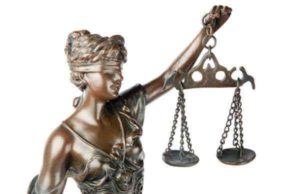
Sexual Discrimination Overview: Understanding Its Impact and How to Address It
Introduction
Sexual discrimination, also known as gender discrimination, is a prevalent issue that affects people of all genders in many aspects of life. It can take various forms, including different treatment based on gender and gender identity, unequal pay, harassment, and exclusion from job opportunities. Here’s a closer look at sexual discrimination, its impact, and strategies to address it.
What is Sexual Discrimination?
Sexual discrimination refers to any differential treatment of individuals based on their gender or gender identity. This includes:
– Pay inequity: paying individuals of different genders different salaries for the same work.
– Hiring and promotion bias: preferring candidates of a certain gender or gender identity for a job based on stereotypes or assumptions.
– Sexual harassment: unwanted sexual advances or behavior in the workplace or other contexts.
– Stereotyping: making assumptions about individuals based on their gender or gender identity, such as assuming women are not suited for leadership roles.
– Exclusion: denying opportunities or resources based on someone’s gender or gender identity.
Impact of Sexual Discrimination
Sexual discrimination can have many negative effects on individuals and communities, including:
– Economic consequences, such as decreased earnings and job opportunities.
– Mental health effects, including stress, anxiety, and depression.
– Physical health effects, including increased risk of illness and injury.
– Social consequences, such as isolation and exclusion from social and institutional structures.
– Reinforcement of gender stereotypes and limitations on individual potential.
Addressing Sexual Discrimination
Addressing sexual discrimination requires a multi-faceted approach that involves education, advocacy, and legal action. Some strategies for addressing sexual discrimination include:
– Advocating for policies that promote gender equality, such as pay equity and non-discrimination laws.
– Providing education and training to promote awareness and understanding of sexual discrimination and its effects.
– Empowering individuals and communities who have experienced discrimination to speak out and take action.
– Supporting and promoting diversity and inclusion in all aspects of life.
– Engaging in allyship and anti-sexism work to challenge and dismantle systems of sexism.
Conclusion
Sexual discrimination is a complex issue that affects people of all genders in many different ways. Recognizing and addressing sexual discrimination requires a concerted effort from everyone, and it begins with education, advocacy, and support for individuals who have experienced discrimination. By working together to promote gender equality and challenge discrimination, we can build a more inclusive and just society for all.
What is Sexual Discrimination?
Sexual Discrimination is an overarching term that qualifies a type of illegal, unlawful, and unethical discrimination that is fostered by a prejudicial belief containing inherent and unproven bias with regard to either an individual’s or group’s gender or sexual orientation.
Gender is defined as the identification of an individual as a male or a female. Gender discrimination is a form of sexual discrimination resulting from presumed opinions that are neither proven nor rooted in empirical, factual basis.
Sexual Orientation is defined as the nature, particularity, and tendency of the sexual attraction latent in an individual or group. Although an ongoing debate exists with regard to the hereditary qualities of the development of sexual orientation, the persecution and discrimination of individuals resulting from their respective sexual orientation continues to exist.
Types of Sexual Discrimination
A wide variety of Sexual Discrimination can take place within the vast expanse of social settings in tandem with the broadness of the public sector. The following are some examples of Sexual Discrimination:
Hate Crimes: These types of crimes are typically committed as a response to personal bias and prejudice with regard to any or all definable traits or qualities latent within an individual or entity. Hate Crimes taking place as a result of Sexual Discrimination can range from the destruction of personal property to the physical assault of an individual or group.
The Glass Closet: A term that is commonly attributed to Sexual Discrimination that exists in a place of employment in which an individual is denied employment advancement or opportunities as a result of sexual orientation.


























